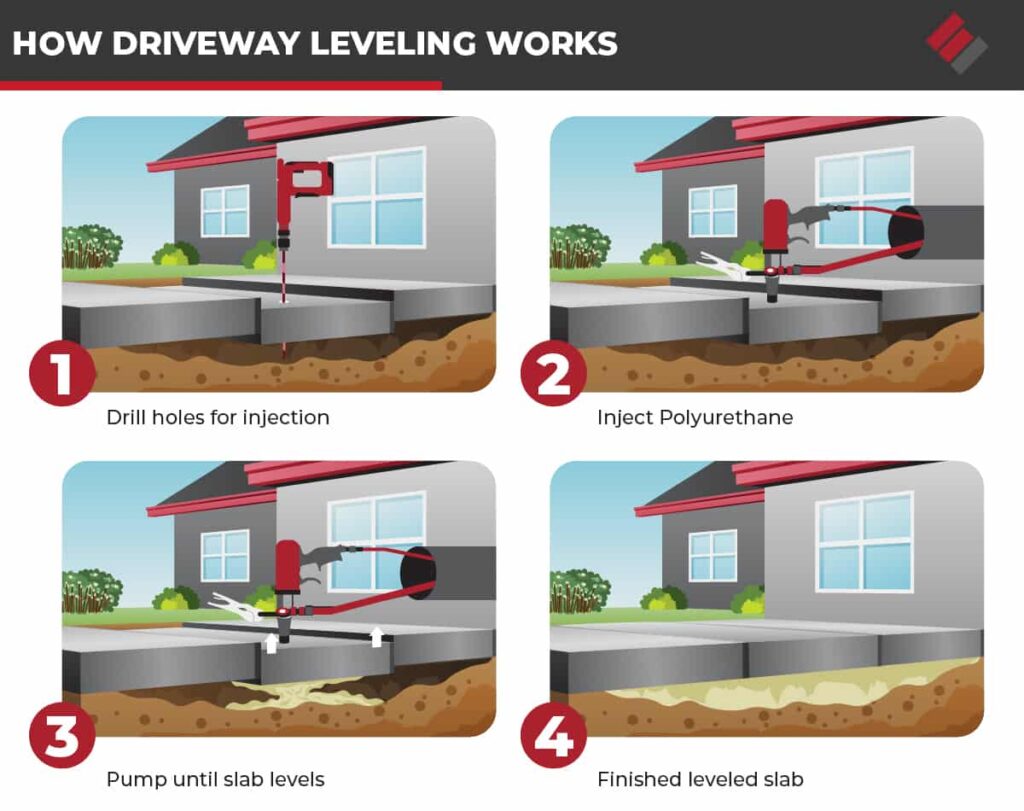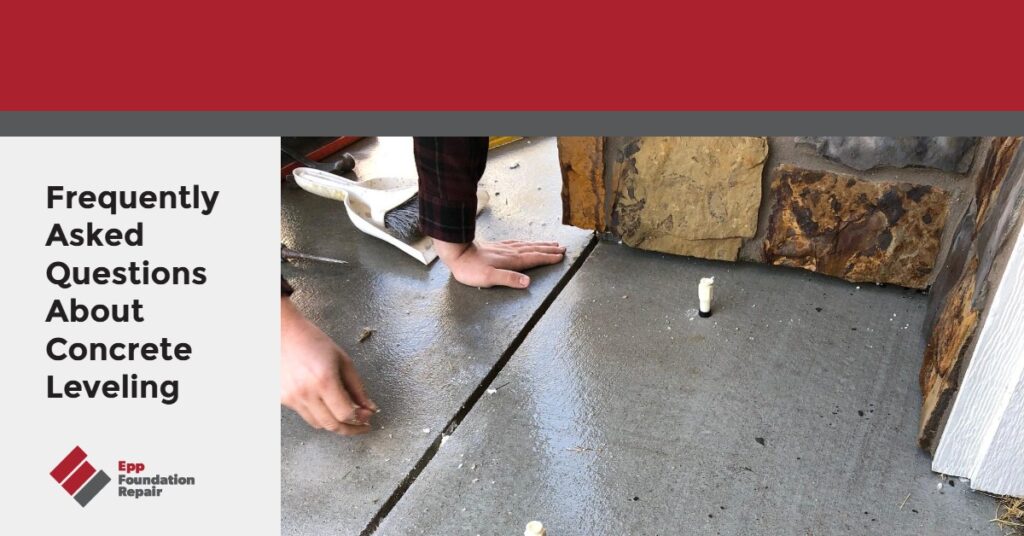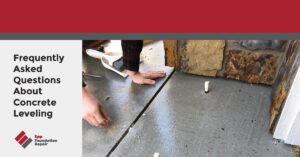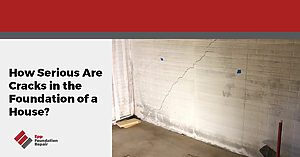The term “concrete leveling” means repairing an uneven slab instead of digging up the slab and pouring a new one. Mudjacking is an old-school technique for concrete leveling. However, today most concrete leveling jobs are done using polyurethane foam injection.
In this article, we’re going to go cover what concrete leveling is, how concrete slabs become unlevel, concrete leveling techniques, and more.
What is Concrete Leveling?
Concrete leveling is a way to lift and level uneven concrete slabs such as sidewalks, driveways, pool decks, patios, warehouse floors, etc., by injecting a lifting material under the slab. Concrete leveling is less expensive and faster than digging up the unlevel slab and pouring a new one.
Although mudjacking was the most common way to lift and level concrete slabs in the past, today, most concrete leveling jobs are done using polyurethane foam injection. In both cases, the lifting material is injected under the slab via small holes. The holes are then patched to match the slab.
Why Does Concrete Become Unlevel
Concrete slabs can become unlevel for various reasons including, but not limited to:
- Erosion under the slab caused by poor drainage – This leads to voids under the slab. When the slab sinks into the voids, it becomes uneven.
- Expansive soil – Expansive soil expands when it soaks up moisture and shrinks when it dries out. Over time, this swelling and shrinking can cause concrete slabs to become uneven.
- Invasive tree roots – We’ve all seen examples of tree roots pushing up on a slab, causing it to become uneven. Tree roots often break concrete slabs as well.
- Seismic activity – Any ground movement can result in an unlevel slab.

Concrete Leveling Techniques
There are two concrete leveling techniques in use today: mudjacking and polyurethane foam injection. Mudjacking is an older technique, and although it’s still being used, polyurethane foam injection is the more popular method today for lifting and leveling an uneven concrete slab. You’re also likely to encounter the term “slabjacking,” which might refer to lifting a slab via mudjacking or polyurethane foam injection.
Both mudjacking and polyurethane foam injection involve drilling holes in the slab and then injecting a material to lift the slab back up. The holes are then patched. Both methods are minimally-invasive and faster than digging up the old slab and pouring a new one.
The uneven slab needs to be in reasonably good condition for concrete leveling to work. In other words, replacement might be the only option if the slab has extensive damage.
Mudjacking Procedure
The mudjacking lifting material is a cement slurry containing sand, soil, and other ingredients. It looks like mud, hence, the name “mudjacking.” The general procedure is as follows:
- Holes are drilled into the uneven slab. These holes are anywhere from 5/8 inch to 2 inches in diameter.
- The cement slurry is injected underneath the slab via the holes.
- The slurry fills all voids under the slab and lifts it up.
- The holes are patched using a compound that matches the color of the slab.
Cons of mudjacking
The cement slurry is heavy. Therefore, it’s possible the slab could sink again, especially if the soil is weak. The slurry is also subject to erosion because it’s a natural material. The holes used in mudjacking are also bigger than those created for polyurethane foam injection.
Polyurethane Foam Injection Procedure
Polyurethane foam injection uses a two-part polymer injected under the slab through dime-sized holes. The foam begins expanding in all directions, filling voids and lifting the slab. The foam also makes the soil under the slab denser.
The foam used in polyurethane foam injection cures in 30 minutes and isn’t subject to erosion. Therefore, it lasts longer than mudjacking. It’s also strong – it can support vehicular traffic – and lightweight. The dime-sized holes used in polyurethane foam injection are smaller than those used in mudjacking. For more information see Concrete Lifting Foam Beats Mudjacking Hands Down For Fixing Uneven Slabs.
Cons of polyurethane foam injection
It’s more expensive than mudjacking. However, it’s cost-effective because it lasts longer.
Neither mudjacking nor polyurethane foam injection is a DIY project. Both concrete leveling methods require special equipment and trained technicians.
Learn more about – Concrete leveling cost.
Benefits of Slab Leveling
Concrete leveling costs less than digging up and replacing the slab, eliminates trip hazards and liability, and quickly restores the slab’s beauty. Most leveling jobs can be completed in just a few hours and then the slab is ready for use again. In contrast, digging up and pouring a new slab takes time because you’ll need to wait for the new slab to dry and harden before you can start using it again.
Read more – how to level a concrete floor
Concrete Leveling Cost vs. Replacing the Slab
Both mudjacking and polyurethane foam injection cost less than digging up and replacing the slab. Polyurethane foam injection is more expensive than mudjacking. So, from most to least expensive, we have:
- Digging up and replacing the slab – Most expensive
- Polyurethane foam injection
- Mudjacking – Least expensive
The exact cost of concrete leveling will depend on where you live, the slab size (how much lifting material is needed), the method used, and the condition of the slab. Contact a foundation repair contractor in your area who does concrete leveling and ask for an inspection and estimate.
If you’re in our service area in Nebraska, Kansas, Iowa, and Missouri, contact us today. We’ll come out to inspect your uneven concrete slab and give you a repair estimate.







